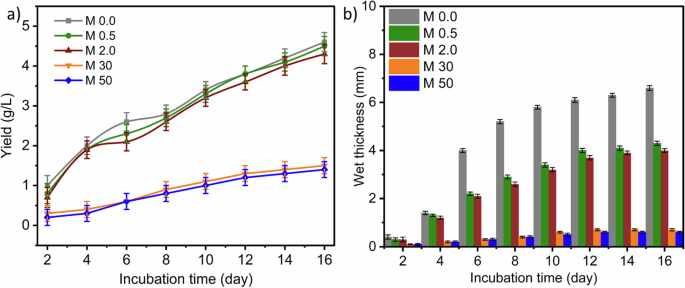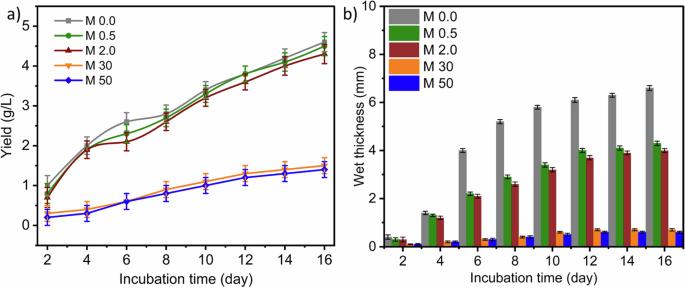Bacterial cellulose-graphene oxide composite membranes with enhanced fouling resistance for bio-effluents management
IF 11.4
1区 工程技术
Q1 ENGINEERING, CHEMICAL
引用次数: 0
Abstract
Bacterial cellulose composites hold promise as renewable bioinspired materials for industrial and environmental applications. However, their use as free-standing water filtration membranes is hindered by low compressive strength, fouling, and poor contaminant selectivity. This study investigates the potential of bacterial cellulose-graphene oxide composites membranes for fouling resistance in pressure-driven filtration. Graphene oxide dispersed in poly(ethylene glycol) (PEG-400) is incorporated as a reinforcing filler into 3D network of bacterial cellulose using an in-situ synthesis method. The effect of graphene oxide on in situ fermentation yield and the formation of percolated-network in the composites shows that the optimal membrane properties are reached at a graphene oxide loading of 2 mg/mL. The two-dimensional graphene oxide nanosheets uniformly dispersed into the matrix of bacterial cellulose nanofibers via hydrogen-bonded interactions demonstrated nearly twofold higher water flux (380 L m−2 h−1) with a molecular weight cut-off ranging between 100–200 KDa and a sixfold increase in wet compression strength than pristine BC. When exposed to synthetic organic foulants and bacterial rich feed solutions, the composite membranes showed more than 95% flux recovery. Additionally, the membranes achieved over 95% rejection of synthetic natural organic matter and bacterial rich solutions, showcasing their enhanced fouling resistance and selectivity.


用于生物废水处理的抗污能力更强的细菌纤维素-氧化石墨烯复合膜
细菌纤维素复合材料有望成为工业和环境应用领域的可再生生物启发材料。然而,由于抗压强度低、易结垢和污染物选择性差,它们在用作独立式水过滤膜时受到了阻碍。本研究探讨了细菌纤维素-氧化石墨烯复合膜在压力驱动过滤中抗污垢的潜力。采用原位合成法将分散在聚乙二醇(PEG-400)中的氧化石墨烯作为增强填料加入到细菌纤维素的三维网络中。氧化石墨烯对原位发酵产量和复合材料中渗滤网形成的影响表明,氧化石墨烯负载量为 2 毫克/毫升时,膜性能达到最佳。通过氢键相互作用将二维氧化石墨烯纳米片均匀分散到细菌纤维素纳米纤维的基质中,在分子量截止范围为 100-200 KDa 时,水通量(380 L m-2 h-1)比原始 BC 高出近两倍,湿压缩强度增加了六倍。当暴露于合成有机污物和富含细菌的进料溶液时,复合膜的通量恢复率超过 95%。此外,膜对合成天然有机物和富含细菌的溶液的排斥率超过 95%,显示出其增强的抗污垢能力和选择性。
本文章由计算机程序翻译,如有差异,请以英文原文为准。
求助全文
约1分钟内获得全文
求助全文
来源期刊

npj Clean Water
Environmental Science-Water Science and Technology
CiteScore
15.30
自引率
2.60%
发文量
61
审稿时长
5 weeks
期刊介绍:
npj Clean Water publishes high-quality papers that report cutting-edge science, technology, applications, policies, and societal issues contributing to a more sustainable supply of clean water. The journal's publications may also support and accelerate the achievement of Sustainable Development Goal 6, which focuses on clean water and sanitation.
 求助内容:
求助内容: 应助结果提醒方式:
应助结果提醒方式:


